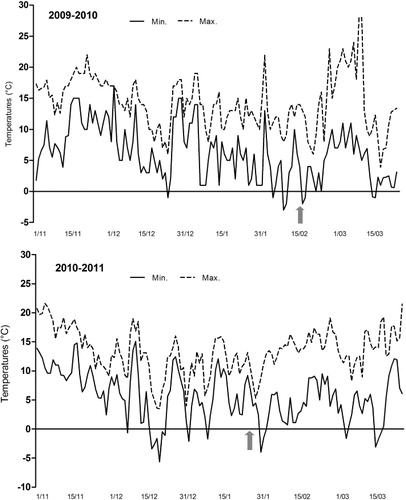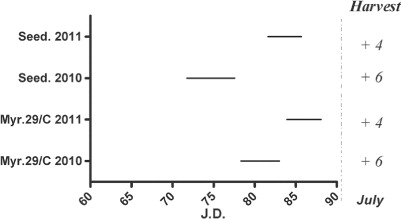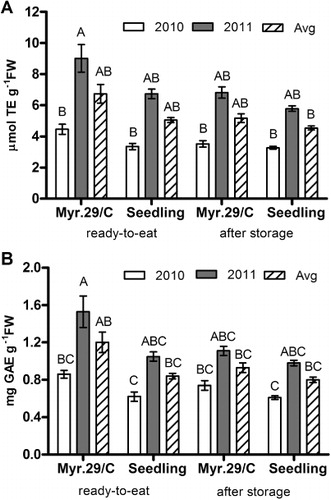Figures & data

Table 1 Monthly mean maximum and minimum temperatures (°C), relative average (Avg) and cumulative rainfall (mm) from April to June over two growing seasons (2010–11).


Table 2 Main physical-chemical traits in apricot fruits of ‘Pisana’ cultivar grafted on to ‘Myrabolan 29/C’ and apricot ‘Seedling’ recorded at ready-to-eat stage and after 14 days of 4 °C cold storage. Mean of a 2-year period ± SEM.

